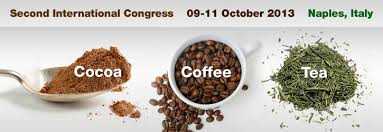Glabasnia A., Servaes M., Kwiatkowski V., Leloup V., Blank I. Nestlé Product Technology Center, 1350 Orbe, Switzerland E-mail: arne.glabasnia@rdor.nestle.com Cocoa is an important ingredient in the food industry used in different applications such as in chocolate making, as a beverage or in coatings
for breakfast cereals. All the different applications require different product properties. Thus, a solid knowledge of the diversity of cocoa powder as an ingredient is crucial in product development in order to meet consumer expectations.
Selection criteria for cocoa powders are often based on supplier specifications and sensory tests only. From a development point of view more objective criteria would be an asset as it allows a more rapid and independent assessment of cocoa powder quality beyond sensory aspects only.
Usually cocoa powders are analysed for their theobromine and catechin content as major constituents of cocoa powder (1). More sophisticated methods have a larger scope, including flavanols and procyanidins as other important compounds that contribute to the antioxidant power of cocoa (2).
For other classes of compounds such as diketopiperazines or conjugated amides methodologies reported in the literature are rather limited although these compounds have already been described as contributors to cocoa taste or as bioactives (3).
Therefore, the aim was to establish a method that allows a more holistic analysis of important cocoa compounds in order to be able to link chemical diversity to other product attributes such as sensory or colour.
Thus a LC/MS method was developed to simultaneously determinate several classes of important cocoa compounds using Multiple Reaction Monitoring (MRM). With this method, theobromine, caffeine, catechins, procyanidins, flavanol-glycosides, diketopiperazines, phenolic acids and conjugated amides as well as amino acids can be analysed in a single run for a detailed chemical characterization of different cocoa powders.
Rosmarinic acid is used as an internal standard to overcome major matrix effects. Sample preparation consisted in extraction with methanol/water to obtain a solution directly usable for LC/MS analysis.
The protocol was kept as simple as possible allowing high throughput screening to compare different sets of samples rather than having time- consuming methods for the individual quantitation of compounds.
A large number cocoa powders could be analysed in a reasonable time frame and the obtained data further used for multi-variate data analysis (MVA). Based on MVA analysis cocoa samples can be grouped by their chemical fingerprints. Thus, sensory evaluation can be focused on samples that are chemically different to relate chemical differences to sensory diversity.
On the other hand, samples in the same chemical cluster can be evaluated for their sensory profile to confirm similarity. References
[1] Langer S. et al., Flavanols and Methylxanthines in Commercially Available Dark Chocolate: A Study of the Correlation with Nonfat Cocoa Solids, J. Agric. Food Chem. 2011, 59, 8435–8441
[2] Ortega N et al., Obtention and Characterization of Phenolic Extracts from Different Cocoa Sources, J. Agric. Food Chem. 2008, 56, 9621–9627
[3] Stark T. et al., T. Molecular definition of the taste of roasted cocoa nibs (Theobroma cacao) by means of quantitative studies and sensory experiments. J. Agric. Food Chem. 2006, 54, 5530-5539


















